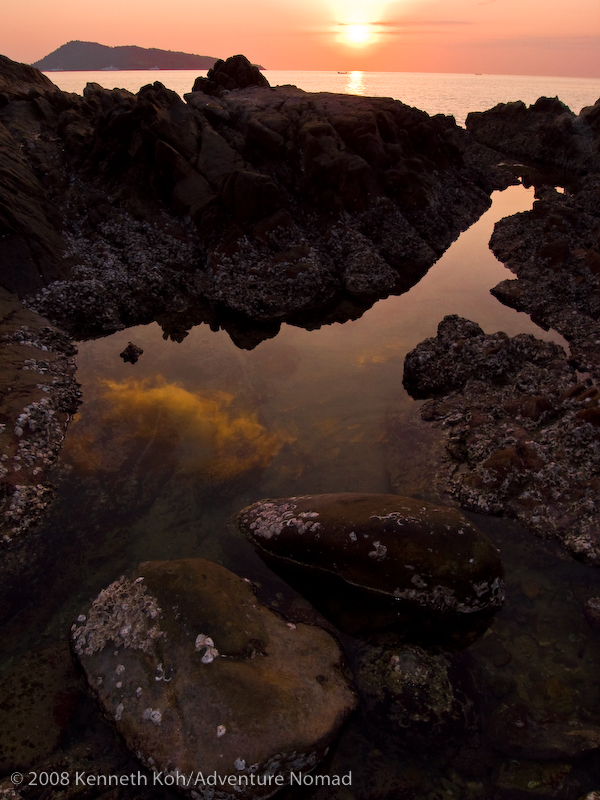 These are my closing remarks on my review of the Sea and Sea 1G camera. This is the same camera as the Ricoh GX100, and it comes bundled with the Sea & Sea DX-1G housing.
These are my closing remarks on my review of the Sea and Sea 1G camera. This is the same camera as the Ricoh GX100, and it comes bundled with the Sea & Sea DX-1G housing.It’s invigorating to be able to wander along the beach with a camera in my pocket, and then being able to dive with that same compact camera after putting it in an underwater housing.
Sure, there are a lot of compact cameras that can do that, but I wanted the wide-angle (24mm equivalent) lens of the 1G/GX100. I never stopped wishing that I had my DSLR with me though, because the 1G/GX100 does have some shortcomings.
Shutter lag is fast for a compact, but not DSLR fast, and still not fast enough. Dynamic range seems poor, and the meter shows a willingness to burn out highlights. Metering in Manual Mode is best, if I have the time. If not, I set the meter to underexpose by -2/3 stop. And I still shoot RAW, despite the almost crippling 5-second wait for the file to be written between shots. The default brightness for the LCD is too dim, especially in bright sunlight, and I have mine cranked up to the max. Images are very noisy above ISO100, so it is basically an ISO100 camera.
Underwater, with the DX-1G housing, the camera is very versatile. I have the option to remove the 16mm Ultra-Wide conversion lens, zoom out to 72mm and use Macro Mode. This is a big plus underwater, because I can do all that without surfacing to change lenses. This means I can shoot the big stuff, like mantas and whale sharks, and shoot the small macro stuff, all on the same dive. I think that the camera’s built in image stabilization is also a great help.
 Would I buy this again? My answer is a cautious ‘yes’ in two parts:
Would I buy this again? My answer is a cautious ‘yes’ in two parts:For underwater shooting, I enjoy the versatility of the 1G and I like the fact that I got the whole package (camera, housing, underwater strobe, 16mm wide-angle conversion lens) for less than the price of a housing for my Nikon D300. Plus, if the housing floods, it is far less costly to replace a compact than a DSLR. For budding underwater photographers like me, I think this is the way to go. But once I gain more experience and confidence working underwater, I think I’ll upgrade to a housing for my D300.
Above water, the camera is the same as the Ricoh GX100. If you don’t need more than ISO100, the camera can perform if you are careful with the highlights. The ergonomics are the best of any compact that I’ve handled. Manual Mode works very well. Competing compacts all have very nice features, but none match the 1G/GX100’s wide 24mm lens. If I didn’t need the 24mm wide-angle, I give the Olympus 790SW a good look. Again, a cautious ‘yes’ to buying the Ricoh GX100… but I’d keep a close eye on the market and the upcoming Sigma DP1.
Update 6 March:
Olympus has an updated model, the 1030SW, an even tougher camera with 10MP and a 28-102mm lens.
Photos:
Top: Tidal Pool Sunset. ISO100, 24mm equiv, 1/250, f4.1, fill flash, in Manual mode.
Bottom: Underwater Videographer. ISO100, 16mm equiv with DX-1G housing and conversion lens, 1/160, f2.9, flash, -2/3EV.

No comments:
Post a Comment